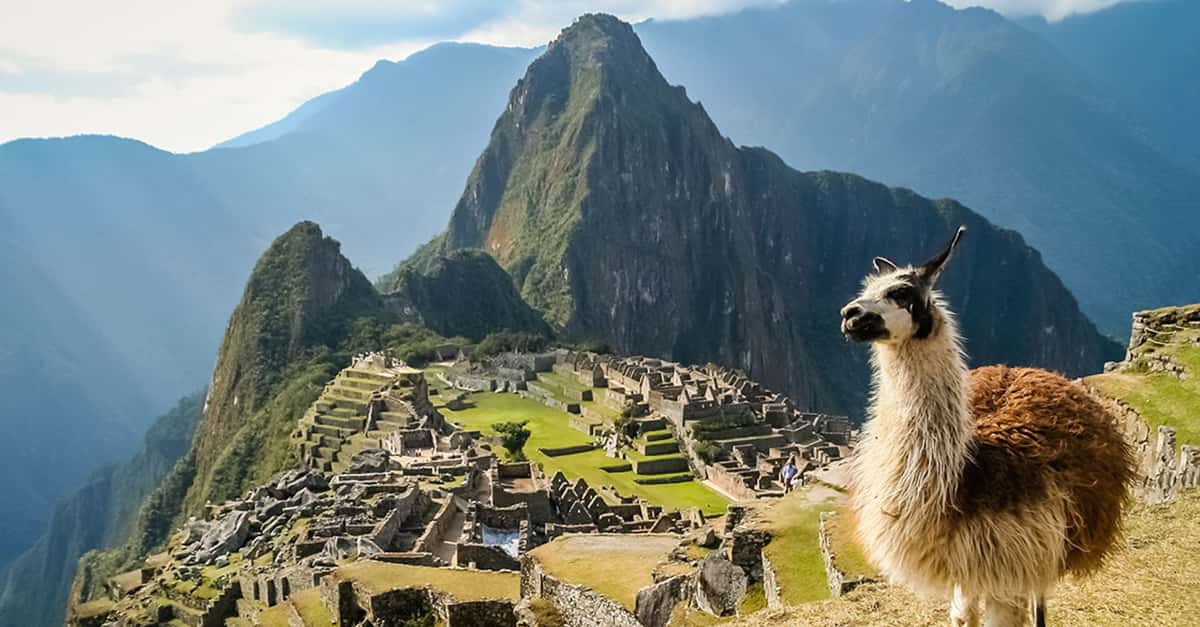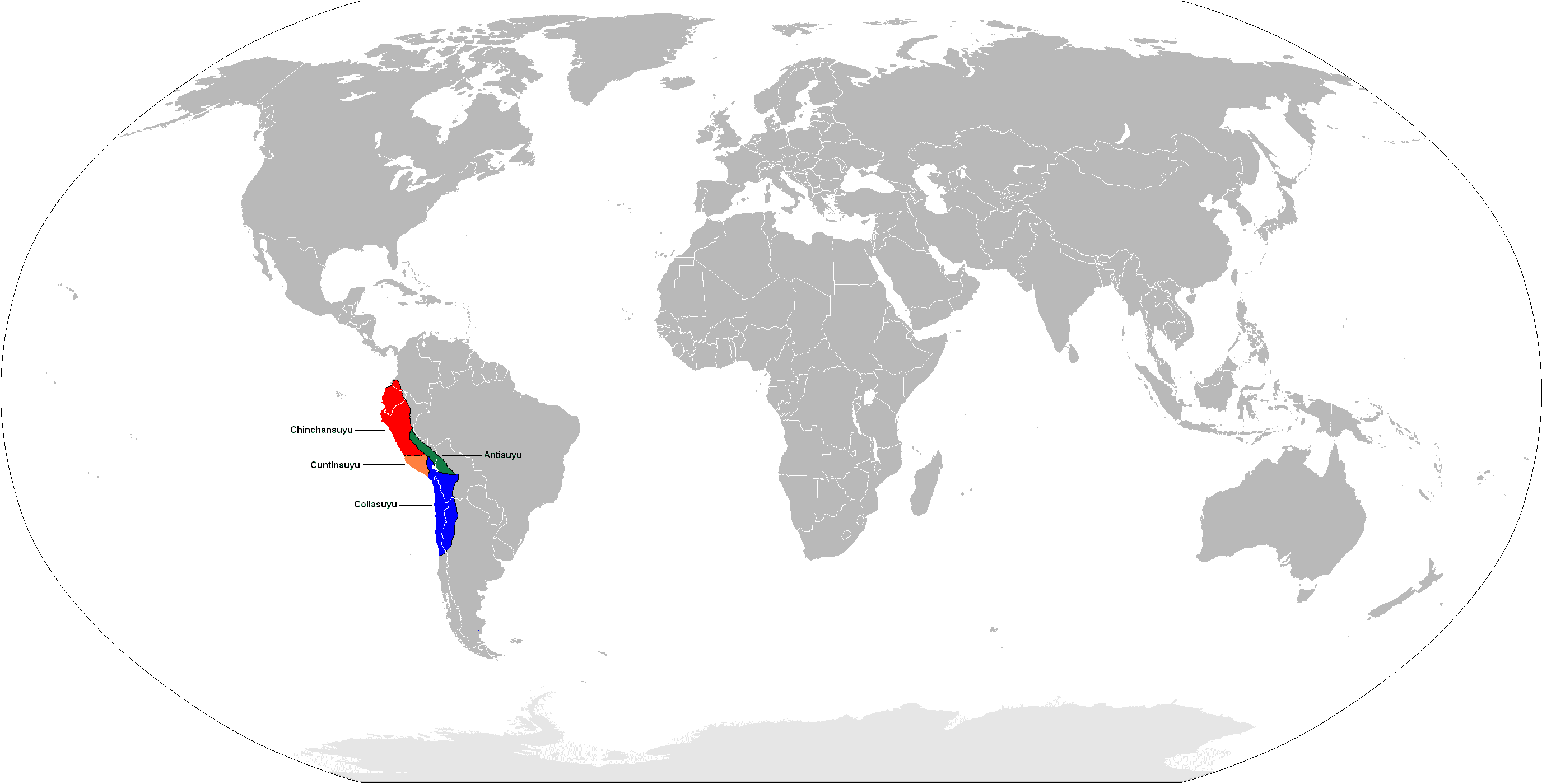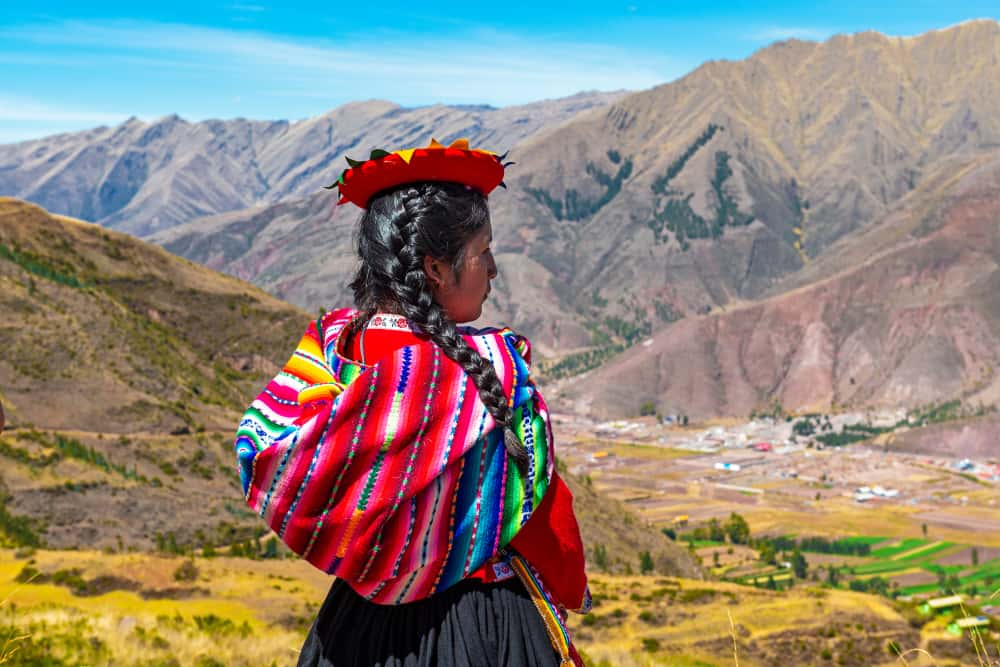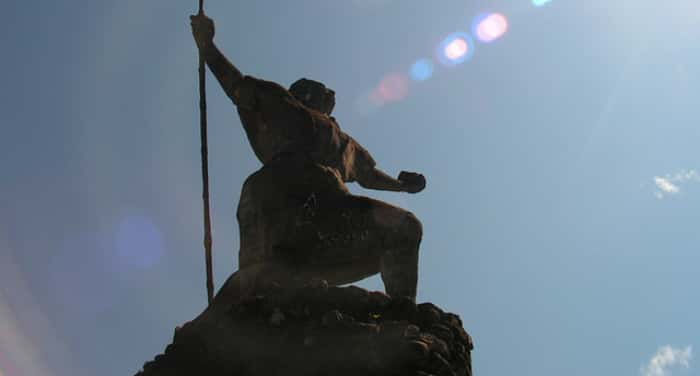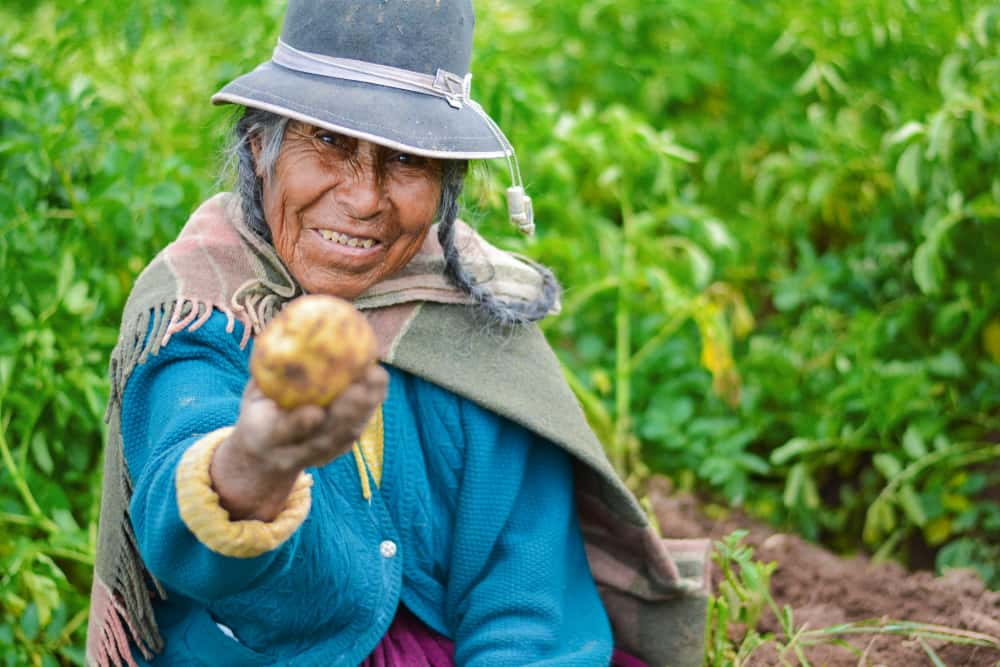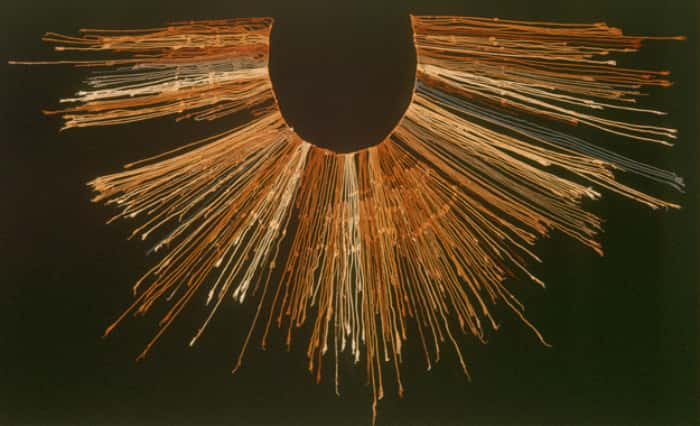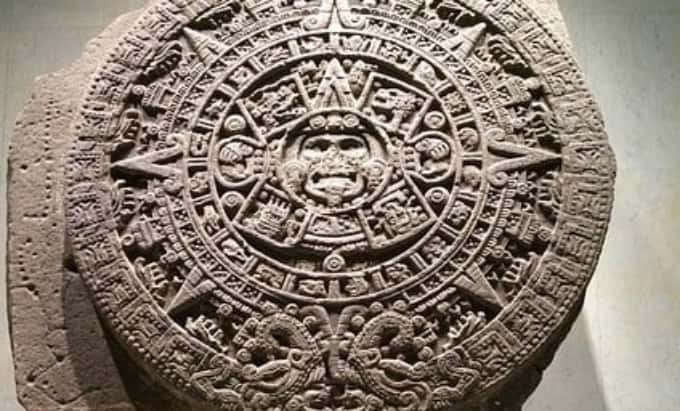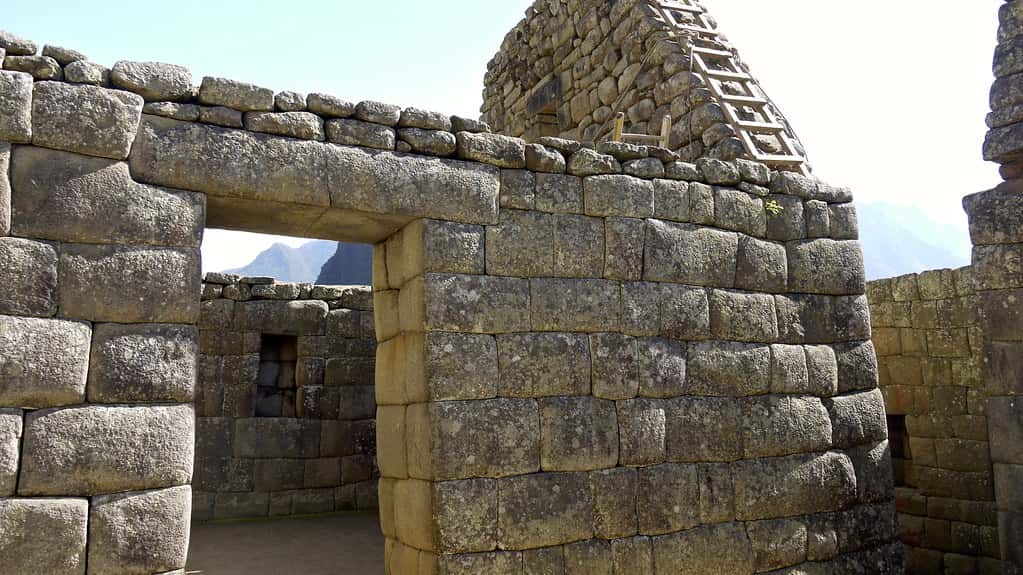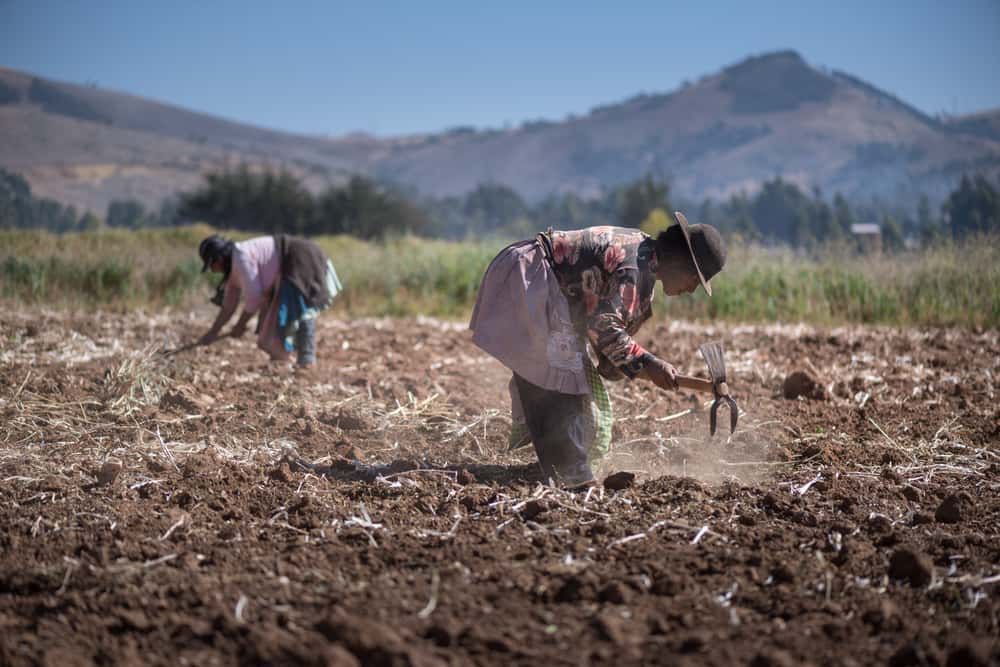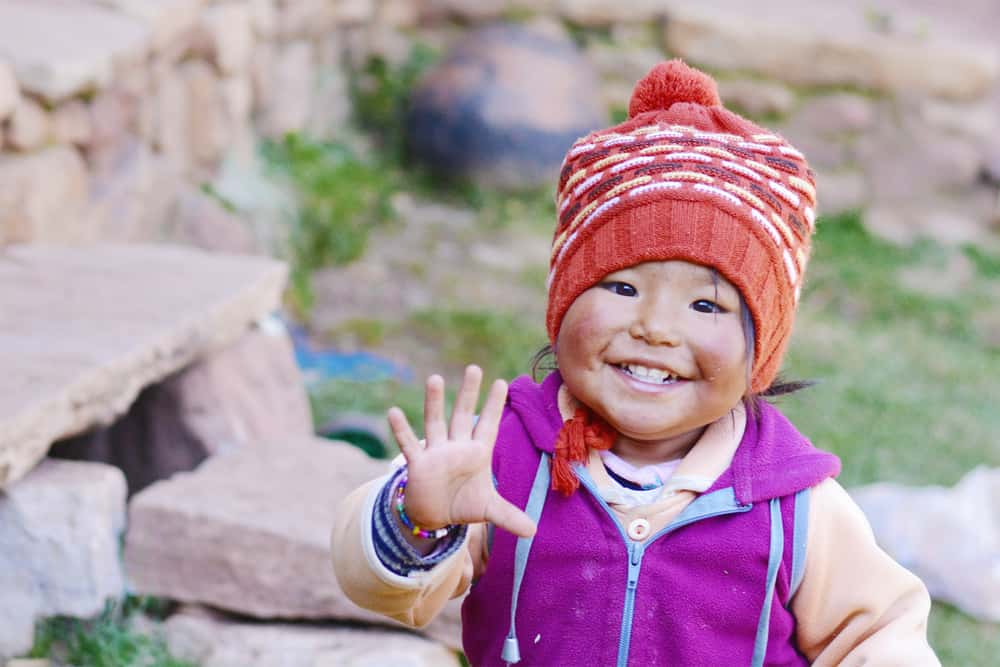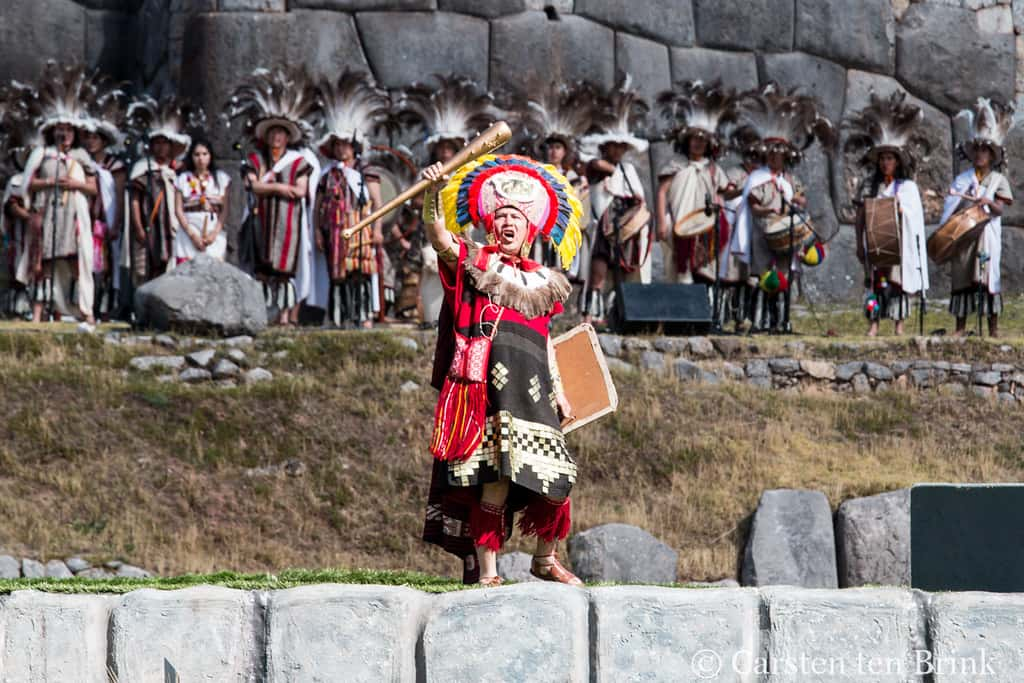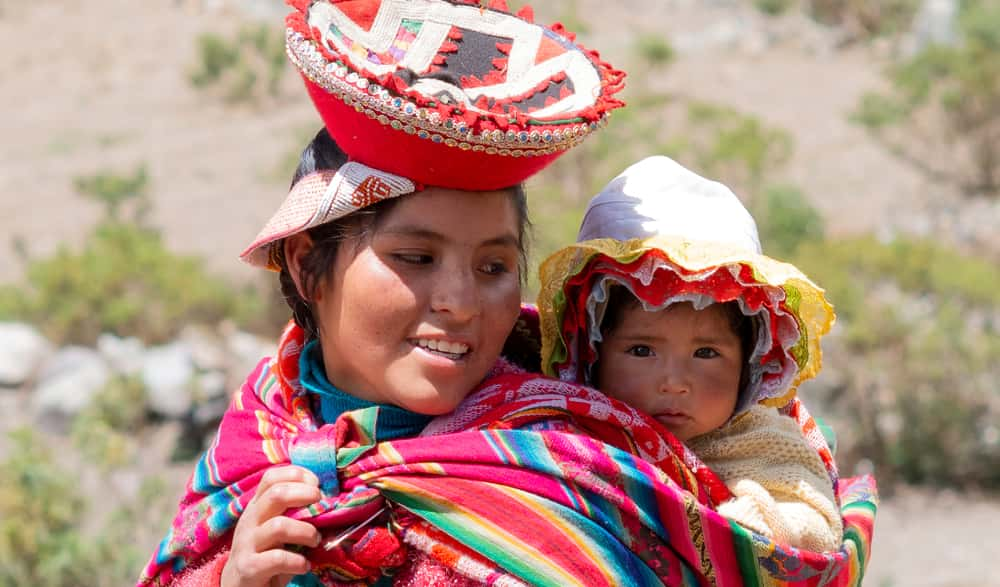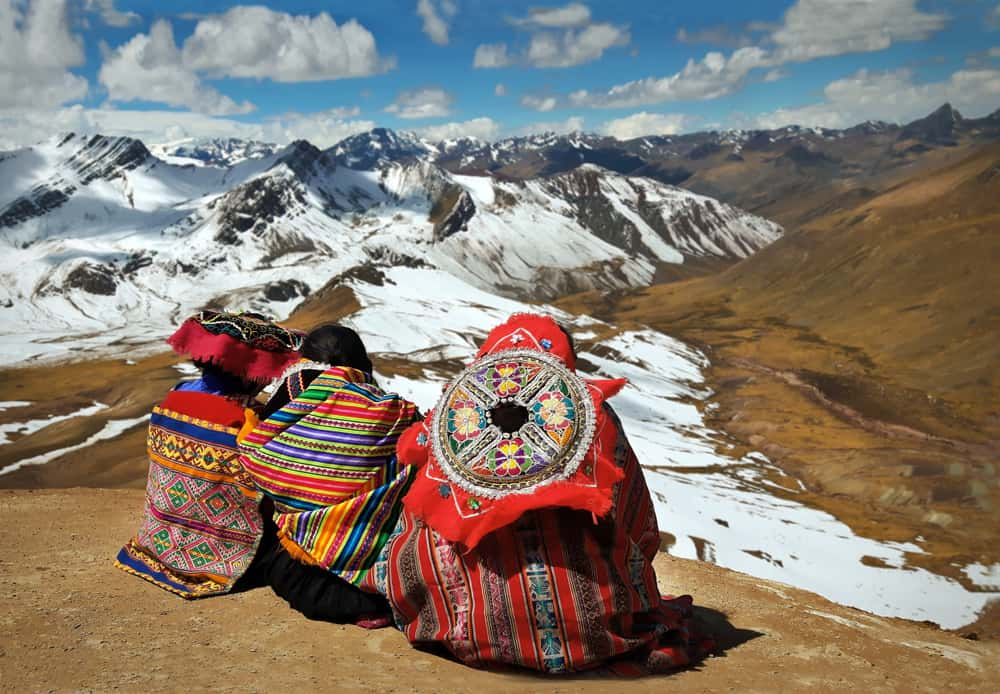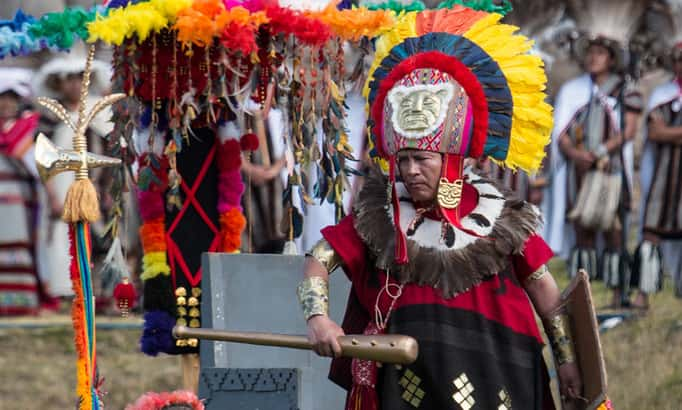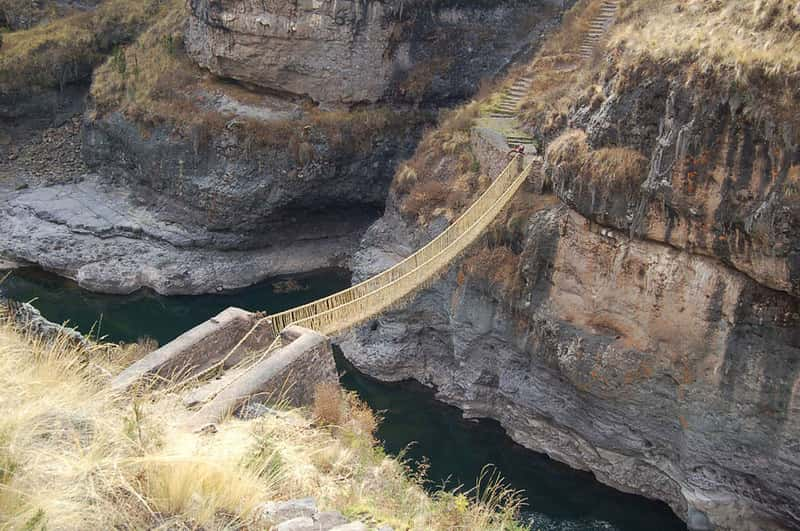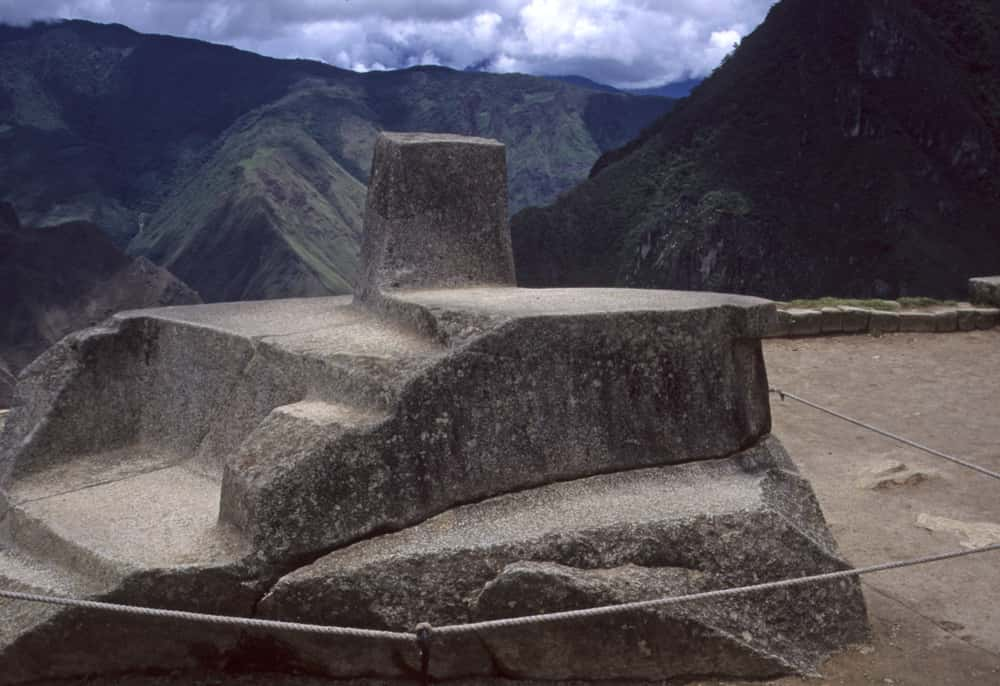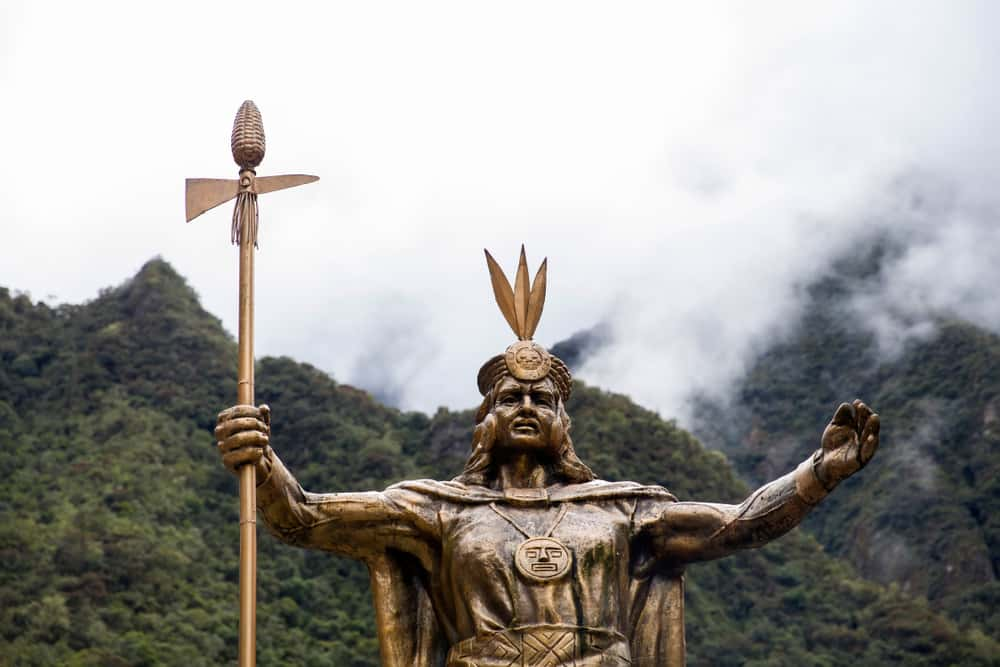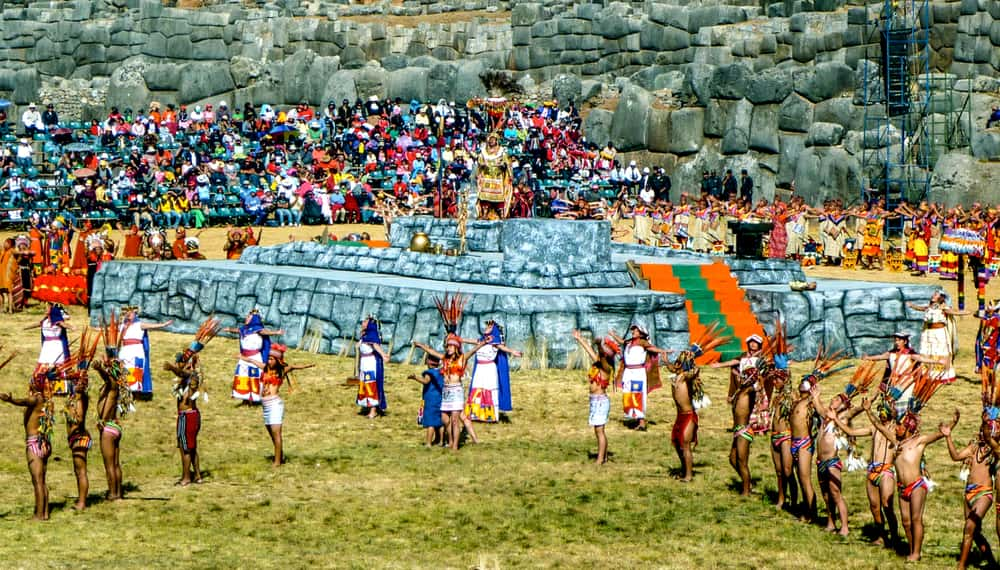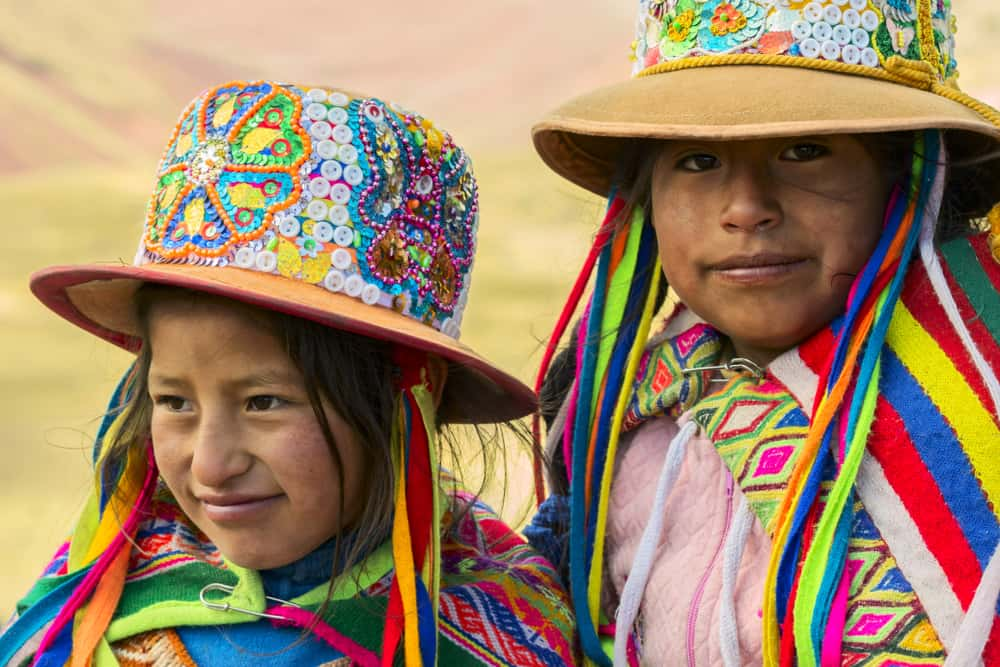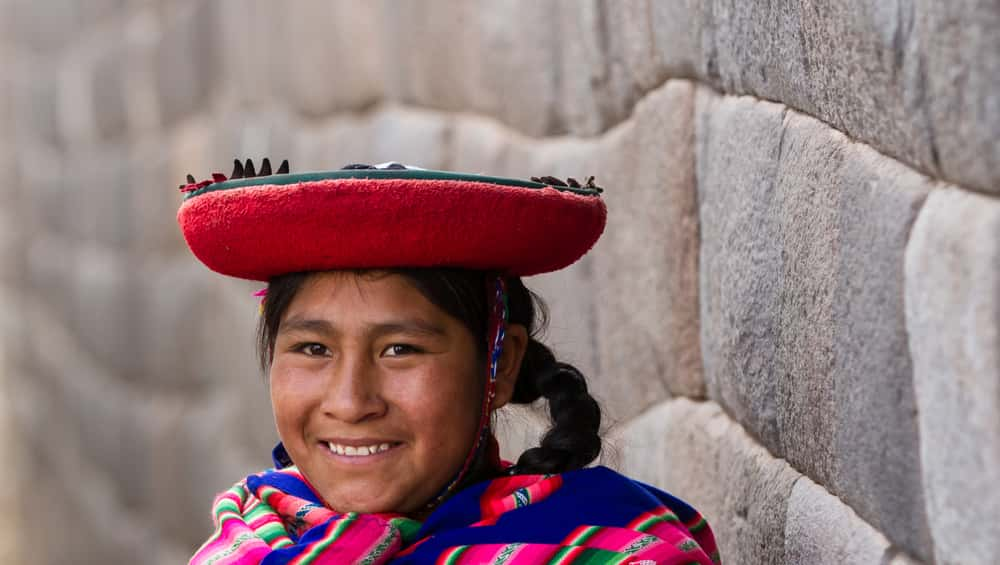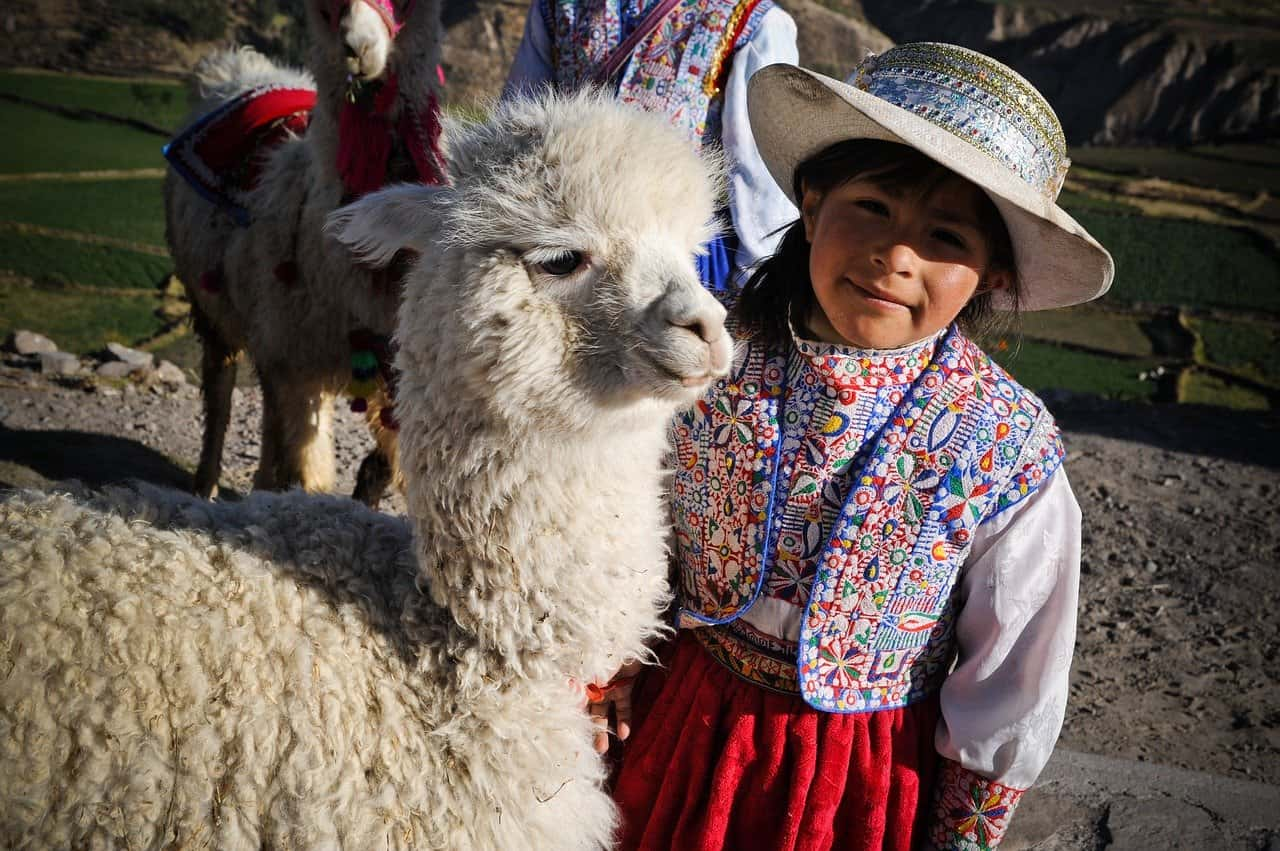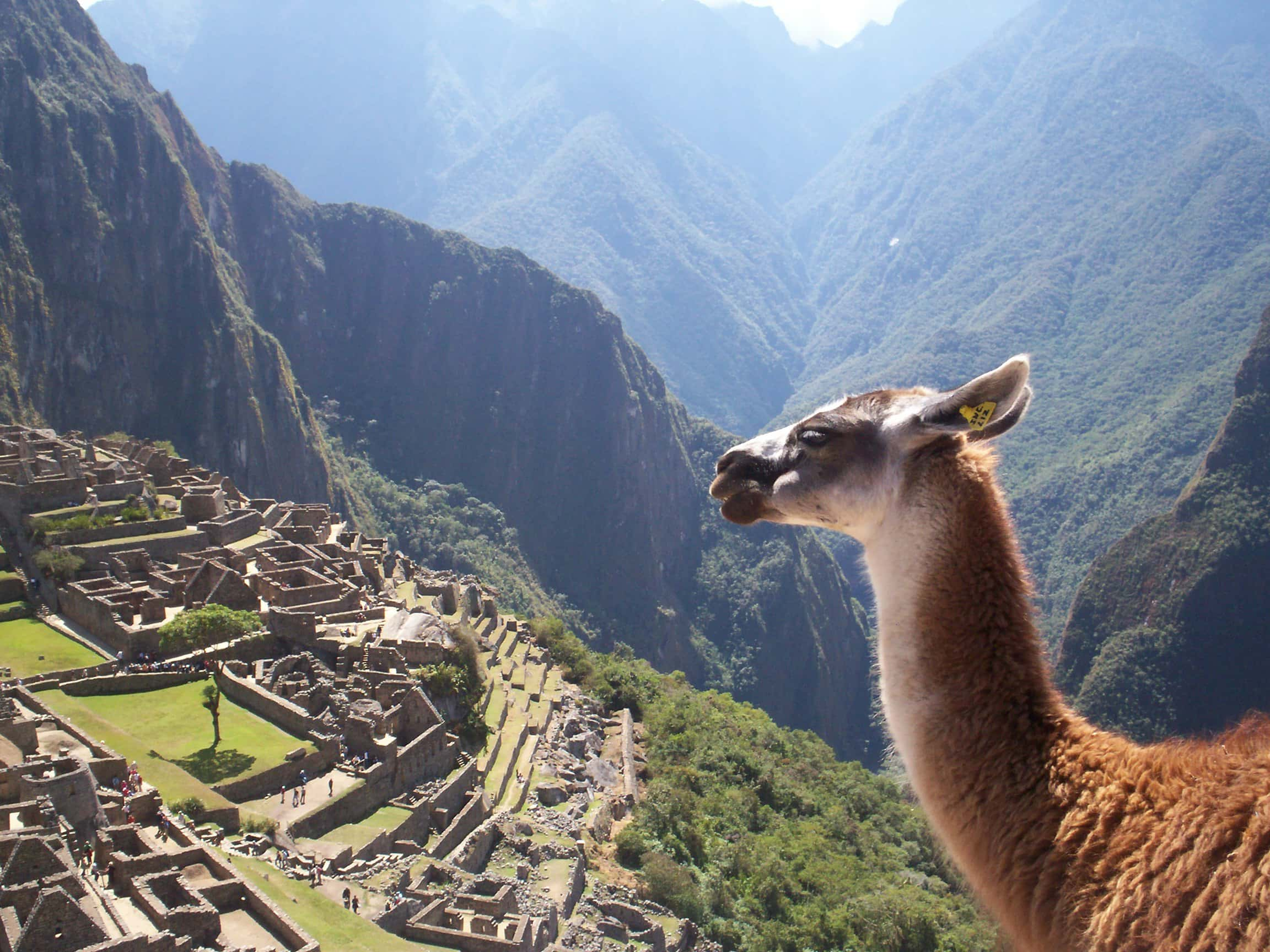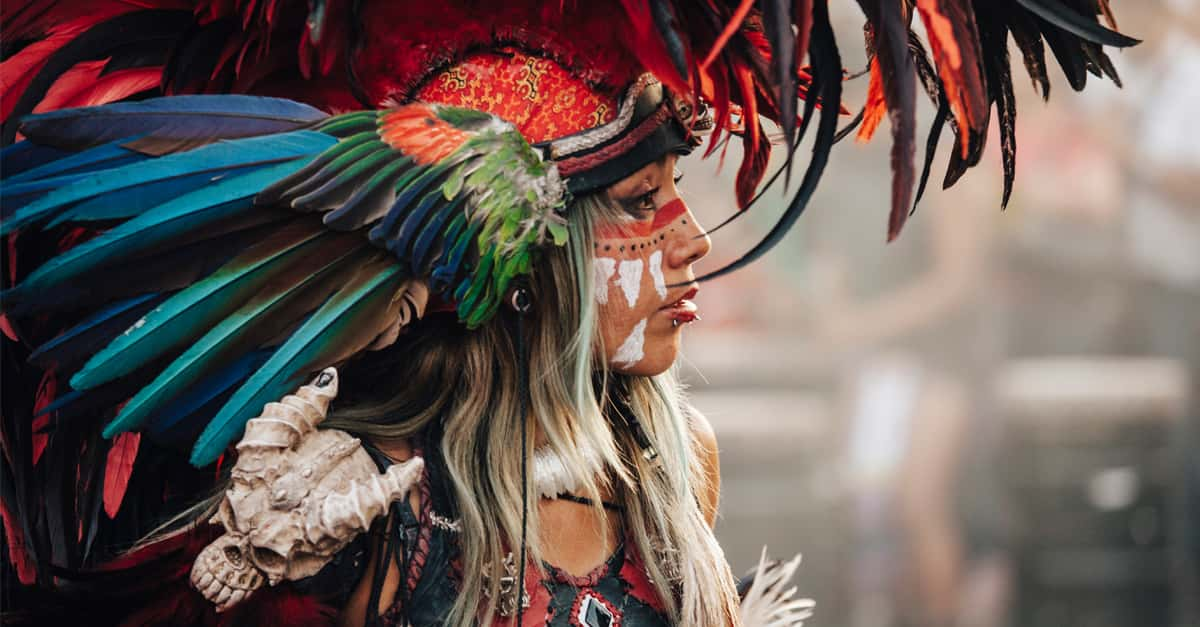The Inca Empire
“I was in Peru and visited a building near Lima built by the Incas. It was low in height, with no windows at all, but all the way in the back there was air movement. And I couldn't figure out how they'd done it; it was incredible.”—Frank Gehry.
Considered to be the largest empire in pre-Columbian America, the Incan Empire experienced a very rapid growth and subsequent fall within the 300 years of its existence. Arising from the highlands of Peru sometime in the early 13th century, the Incan Empire held strong until its conquest by the Spanish in 1572. Though brief, the civilization brought with it many innovative tools and tactics that are still used today.

24. Larger Than the Roman Empire
The Incan civilization created its own roadways and routes that stretched more than 5,230 km (3,250 miles) from Chile to Columbia. That’s roughly the distance between New York and San Francisco. What is even more impressive is that they did not use any wheeled transportation, but rather traversed these roadways by foot or riding llamas.
23. Complicated Surgeries Were Successful
Researchers have discovered that the Incas had developed a very sophisticated understanding and application of medicine. Dating as far back as 2,000 years, evidence has suggested that the success rates of procedures such as trepanation, where a hole is created in the skull, were as high at 90%. Coca leaves were used to lessen hunger and boost energy. They also used a remedy to place over wounds created by boiling bark from a pepper tree.
22. Incan Postal Workers
The Incas developed a type of communication system where relay messengers ran across rope bridges to meet the next team with important messages known as quipus. These messengers, called chasquis, lived in pairs so that one could sleep while the other one awaited any incoming information. They would be required to carry these messages and gifts up to 240km (149 miles) per day.
21. The First Potato Farmers
The Incas were the first to cultivate the potato, approximately 7,000 years ago. Potatoes were revered by the Incas, and they often buried them with their dead. In 1534, Spanish conquistadors discovered the potatoes while looting in search of gold and treasures. They subsequently used them on their ships to prevent scurvy, and thus brought them to other parts of the world. The word potato is derived from the Quechua word papa and the Taíno word batata.
20. Organized Record Keepers
Incan civilization was very well known for a recording device known as a quipu, also known as a talking knot. It usually consisted of colored, spun, and plied/waxed thread or strings made from cotton or camelid fiber. This system helped the Incas to collect data and keep records regarding tax obligations, properly collected census records, calendrical information, and military organization.
19. When's Your Birthday?
Their keen observation of the cosmos resulted in the development of a solar year compound of 12 months consisting of 30 days, divided into three weeks of 10 days each. The last day was considered to be a fair or market day where bartering took place. According to scholars of Inca civilization, the calendar used by the ancient Peruvians was as follows:
Raymi (December): La gran pascua del Sol, Huarachicuy.
Camay (January): Penitence and fasting of the Incas.
Jatunpucuy (February): Month of flowers in which sacrifices with huge amounts of gold and silver were made.
Pachapucuy (March): Month of rain, animals were sacrificed.
Arihuaquis (April): Maturation of maize and potatoes, the main foods of the Inca people.
Jatuncusqui (May): Harvest month.
Aucaycusqui (June): Feast in honor of the Sun god Inti Raymi, coincides with the winter solstice.
Chaguahuarquis (July): Month in which he carried out the distribution of land, and preparation for planting.
Yapaquis (August): Month planting.
Coyarraimi (September): Feast in honor of the Coya (queen), and to expel evil spirits and disease.
Humarraimi (October): Period for the invocation of the rain.
Ayamarca (November): Time to worship the dead.
18. Skilled Tradespeople
The Inca were very skilled in masonry and construction, making use of locally sourced materials such as limestone and granite to build their cities. The would use bonze, stone, and copper tools to cut the hard rocks along their natural fracture lines. It is believed that the stones were swung into place using friction to create perfectly convex and concave sides. Due to an absence of stress concentration points, Incan buildings had an incredible seismic resistance which kept them stable during earthquakes.
17. Advanced Farmers
In order to overcome the adversities of the Andean terrain and weather, the Incas adapted agricultural technologies that had been developed by previous cultures. This allowed them to organize the production of a very large range of crops from very diverse environments including the arid coast, the high, cold mountains, and the humid jungle regions. The farmers did not have suitable domesticated animals to work their lands and therefore had to rely on manual tools. These tools included the Chaki taklla, a human-powered foot plough, the Rawk’ana, a hoe with a thin sheet of wood to harvest tubers such as potatoes, and a Waqtana, a term for “clod buster.” These tools were used by Andean farmers for thousands of years.

History's most fascinating stories and darkest secrets, delivered to your inbox daily.
16. Super Babies
Ok, perhaps not “super” in the more common sense. Childhood for the Incans would be seen as very harsh by today’s standards. When the child was born, they would wash it with cold water and wrap it in a blanket. Soon after, the baby was put in a kind of playpen – which was actually just a pit that was dug in the ground. A lot was expected from children at early ages: by age one, the child was expected to crawl and walk independently. At age two, a child was considered to have left infancy, and was celebrated with a naming ceremony. From this point on, all children were expected to help around the house, and were severely punished for any disobedience. Boys would receive a loincloth when they turned 14 to mark their manhood. If a boy was from a noble family, he would perform tests of endurance and knowledge and would receive a weapon, the color of which represented his rank in society.
15. Bring Out Your Dead
The Incan civilization was pantheist, and believed in deities such as the sun god, earth goddess, corn god, and so on. Religion was the common element between the upper and lower classes and was often the main reason for interaction between the classes. The people celebrated many intricate ceremonies that could last from sunrise to sunset, the main festival being the annual sun-celebration where thanks was given for the year’s crops, and prayers were offered for an even better harvest next year. The people would fast and abstain from intimacy prior to the festival. Solemn hymns were sung and ritual kisses were blown towards the sun-god. A llama would be sacrificed, and its lungs pulled out to be used to predict the future. The celebration was so significant that the mummies of distinguished dead were brought out to observe the ceremonies.
14. Burial Practices
For the common people, there was belief in reincarnation and a moral code to follow. Those who obeyed the code—do not steal, do not lie, do not be lazy—went to live in the sun’s warmth. Those who disgraced the code would spend their eternal days in the cold earth. For the upper class, prominent persons would be mummified and taken to pacirina with an assortment of possessions. Here, the mummies would be able to converse with the area’s other ancient ancestors. The similarity with Egyptian customs has led some to speculate that the ancient Phoenicians may have traveled to the Americas and cross-fertilized the two cultures.
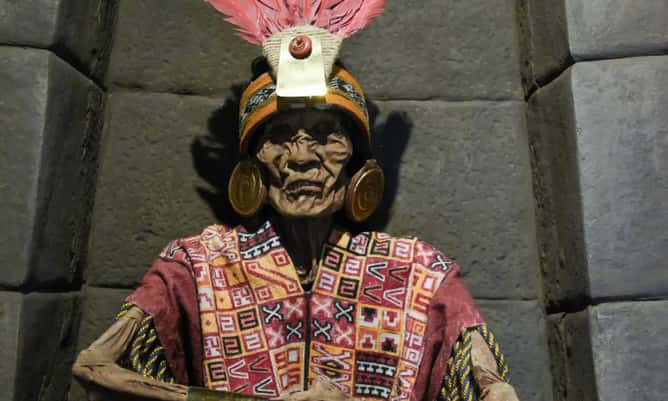 Shutterstock
Shutterstock
13. No Thanks
Skull deformation was a common practice whereby a cloth was tightly wrapped around the heads of children so their skulls would elongate. This wrapping would typically begin around one month of age and last until about six months of age, during which time the skull is most malleable. There is not a definitive reason as to why the Incas practiced this, however it has been speculated that it could be due to classifications of wealth and power.
12. Inca by Blood
While mythology is most commonly used to explain natural phenomena, the Incas also used it to ensure a distinction within the classes. The origin myth of that describes the beginnings of the Incan Empire through the settlement of the Cusco Valley contains within it reinforced ideas of social inequalities. By proclaiming this myth as the historical roots of the civilization, the Incas were able to hold their authority over the empire, as this and other tales were recounted and retold in the many festivals and rites celebrated throughout the year. Due to this, the Inca were able to hold a special status of “Inca by Blood” which granted them significant privileges over non-Incan people.
11. Less Is More
The high priests practiced asceticism and lived an ascetic life. This means that they would fast, partake in chastity, and would only eat simple foods. This simple type of lifestyle left much time for the spiritual leaders to pray and reflect on important religious matters. Asceticism in the ancient theologies is often seen as a journey towards spiritual transformation where the simple is sufficient, the bliss is within, and the frugal is plenty.
10. Single-Use Clothing
The Incan Emperor (or Sapa Inca) only wore each article of clothing once, after which it would be burned. There was a group of “chosen women” whose job it was to ensure the Sapa had enough clothing to wear each day. They were kept busy weaving new outfits for him to keep up with the demand. His clothes were very intricate, embroidered and covered with jewels, and his shoes were made of the finest furs and cloths.
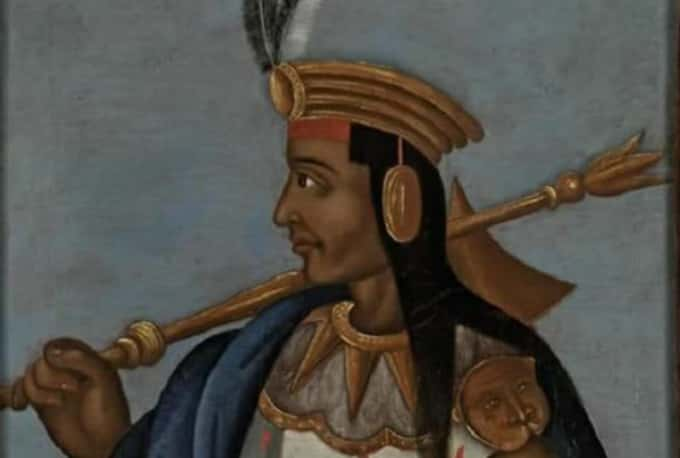
9. Highway
An integral part of the roadway system, rope bridges were suspended over canyons, gorges, and rivers, and exemplified the Incan innovation in engineering. They were constructed by weaving together ichu grass, which was very strong in bundles. The bridges were kept strong and reliable as they were repaired frequently by local villagers as part of their public service obligation. Repairing the bridges was a dangerous task that was frequently met with death. Today, only one of those bridges remains, the keshwa chaca, near Huinchiri, Peru. It has been rebuilt every year for the past 500 years.
8. Weathermen
The Incas were familiar with the influence of the moon and stars on people and animals. They were able to predict times of rain and drought by identifying the lunar phases. Astronomical observation also helped them to determine optimal times for planting and harvesting, which could be why they believed the Sun, Moon, and Stars were divine beings. Eclipses were seen as the deities being in distress—often appeased with the sacrifice of a llama—and the passage of a comet was believed to be a negative omen for the empire.
7. Body Mods
Inca men wore gold or silver plugs in their ears which indicated their nobility. The Sapa Inca would wear such large and heavy plugs that his earlobes could stretch down as far as his shoulders. These stretched piercings later gave way to the Spanish nickname for the Inca, orejones, meaning “big ears”.
6. Army Proud
As the Incan Empire grew, the initial guard that was made up of a loose confederation of peasant warriors was replaced by a strong army of professional officers. These officers were chosen during the Warachikuy festival where candidates underwent various tests of physical skill, including one to see who could remain awake the longest—with some reporting that they could stay awake for a whole week! All citizens were required to perform either military or community service, and one in every 50 men over 25 years of age would be chosen for the military. For the noblemen it was an honor and a duty, and for the common men it was seen as a means of social promotion.
5. Desperate Times, Desperate Measures
Children were chosen to be sacrificed during or after important events, such as the death of the Emperor, or during a drought or famine. They were selected because there were seen as truly pure beings, and only the most physically perfect and healthy specimens were deemed good enough to be presented to their gods. The children were celebrated ahead of time for their impending sacrifice and dressed in fine clothing and jewellery. The high priest then took the child or children to high mountaintops where they were given an intoxicating drink to minimize their pain, fear, and resistance before being sacrificed and offered up to the gods.
4. The Chosen Women
Aclla, also known as the Chosen Women, Virgins of the Sun, and Wives of the Inca, were chosen at the age of 10 to be sequestered and remain virgins until they were bestowed upon distinguished men. Some never married, and instead lived their lives in a monastic environment while they performed several services such as producing luxury items, preparing ritual food, and brewing chica (beer) for religious festivals. The most perfect of these women would be selected as human sacrifices for the gods.
3. Blood Sacrifice
Recently, the mummified bodies of three Incan children were found preserved in the ice of Mount Ampato. The first girl, age 15, was discovered in 1995 and was later named Mummy Juanita. Another girl, age 6, and a boy, age 8, were discovered shortly after in a nearby location. Tests run on the bodies all indicated that the children had been given alcohol and coco leaves to make them fall asleep, and later froze to death. It was also noted that the only child who showed signs of struggle was the boy. In 1999, an Argentine-Peruvian expedition found three more preserved, sacrificed Incan children. They are now exhibited in rotating fashion in the Museum of High Altitude Archeology, which was specially built for them in Argentina.
2. Hidden in the Clouds
Hailed as one of the Eight Wonders of the World, Machu Picchu is the most familiar icon of the Incan civilization. Sitting 9,970 feet above sea level, it was built around 1450 in the classical Incan style, with polished dry-stone walls. Although many of the Incan population knew of the structure, they hid it from the Spanish conquistadors. Moreover, about a century after it was built as a royal estate, Machu Picchu was abandoned. Many speculate that this was because of the destructive forces of the conquistadors, but other historians have suggested a even darker reason: it's possible that the inhabitants died of a smallpox outbreak brought on by travellers before the Spanish came to the locality. It was not “re-discovered” until American historian, Hiram Bingham, brought it to international attention in 1911.
1. A Swift End to an Incredible Empire
In 1532, accompanied by 180 men, Francisco Pizzaro defeated the Incan Empire, which was ruled by the Emperor Atahualpa at the time. The halls of Inca Emperor Atahualpa were lined with gold, silver, and emerald—more riches than the conquistadors had ever seen. So when he was captured, Atahualpa gave the Spanish a final desperate plea: he would fill a room once with gold and twice with silver in just two months if they would only grant him freedom or at the very least spare his life. But after a mock trial, Atahualpa was brutally executed.
You May Also Like:
After Her Infamous Divorce to the Shah of Iran, Queen Soraya Was Called “The Sad-eyed Princess”
Every English crown came with a scandal, and some nearly cost the kingdom itself.
Reza Khan Was The Shah Of Iran—Until His Brutal Downfall
Sources: 1, 2, 3, 4, 5, 6, 7, 8, 9, 10, 11, 12, 13, 14, 15, 16, 17, 18, 19, 20, 21, 22, 23

